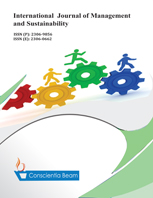Benefits and Risks of Satisficing Levels for Input and Output Quantities in Efficiency Analyses from a Corporate Social Responsibility Perspective
DOI:
https://doi.org/10.18488/journal.11/2016.5.12/11.12.94.101Abstract
In efficiency analyses it is being regularly insinuated that it is desirable to realize a maximum ratio between the produced outputs and the used inputs. According to the concept of satisficing, however, activities can be assumed to be satisfactory if they meet a specific aspiration level. The concept of satisficing has been incorporated into efficiency analysis techniques through satisficing levels. In this paper, benefits and risks are being discussed that result from considering satisficing levels in efficiency analyses from the perspective of Corporate Social Responsibility.
Keywords:
Corporate Social Responsibility (CSR), EATWOS, EATWIOS, Efficiency, Satisficing levels, Sustainable developmentAbstract Video
Downloads
Download data is not yet available.
Published
2016-12-03
How to Cite
Peters, M. L., & Zelewski, S. . (2016). Benefits and Risks of Satisficing Levels for Input and Output Quantities in Efficiency Analyses from a Corporate Social Responsibility Perspective. International Journal of Management and Sustainability, 5(12), 94–101. https://doi.org/10.18488/journal.11/2016.5.12/11.12.94.101
Issue
Section
Articles

